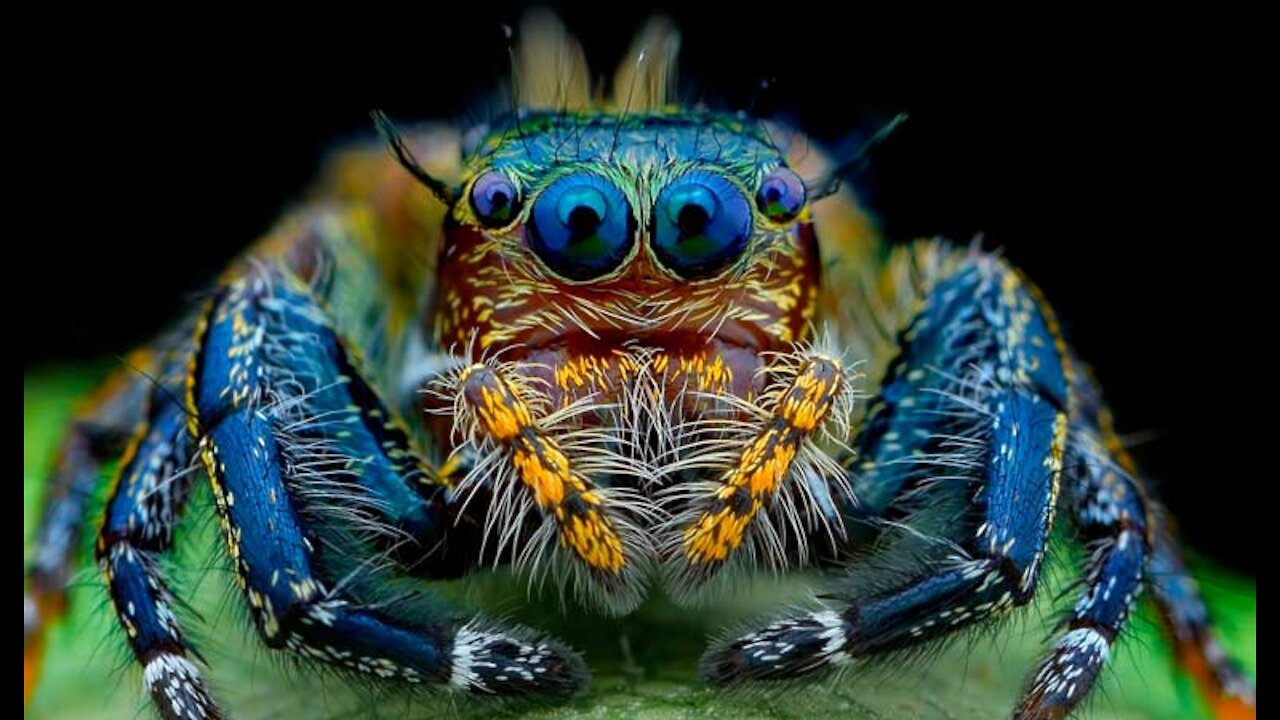Premium Only Content

things you didn't know about spiders
Araneae (Greek: arachne; "spider") is an order of arthropods in the class Arachnida that includes species known by the common names of spiders or arachnids. It has a natural distribution on all continents (except Antarctica) and occurs in virtually all types of terrestrial habitats.
They have eight legs and mostly chelicerae that inject venom, differing anatomically from the other arthropods by a body plan (tagmosis) characterized by two tagmas, the cephalothorax and the abdomen, united by a small and cylindrical structure, the pedicel. Unlike insects, spiders do not have antennae and have a well-developed and centralized nervous system, the most centralized among arthropods. They produce webs with great morphological and size variability using spider silk, a protein-based structure that combines lightness, strength and great elasticity, being in some of these aspects superior to the best synthetic materials.
There are two suborders:
Opisthothelae, the most diverse and abundant, which groups the taxa Mygalomorphae (the crabs) and Araneomorphae (the modern spiders); and Mesothelae, which includes only the Liphistiidae family, consisting of rarely seen Asian spiders. It is estimated that there are about 40 000 species of spiders, currently divided into more than 100 families, which makes this taxon the second largest order of arachnids, only surpassed in diversity by the order Acari (the mites).
The most corpulent spider species is the Theraphosa blondi (Latreille, 1804), which can measure up to 20 cm in wingspan, and the smallest is the Patu digua (Forster & Platnick, 1977), native to Colombia, which is the size of the head of a pin.
Spiders are a frequent reference in art and mythology, symbolizing patience, cruelty and creativity. Silk and the chemical compounds present in spider venoms are considered as potential raw material sources for nanotechnology applications and other uses in the field of materials engineering and for the preparation of medicines and biopesticides. Despite the high prevalence of arachnophobia, only the bite of about 30 species of the more than 40,000 that exist is considered dangerous for humans.
-
![Things You Probably Didn't Know About Sloths [GMG Originals]](https://1a-1791.com/video/s8/1/3/J/4/V/3J4Vb.0kob-small-Things-You-Probably-Didnt-K.jpg) 1:12
1:12
SharedIllustration
3 years agoThings You Probably Didn't Know About Sloths [GMG Originals]
96 -
 1:35
1:35
WideOpenCountry
3 years ago5 Things You Didn't Know About Sandra Bullock
151K4 -
 1:05
1:05
WideOpenCountry
4 years ago5 Things You Didn't Know About Kevin Costner
63.8K4 -
 0:48
0:48
Minecraft's Shorts
3 years agoMinecraft 2021 - " more things you didn't know about minecraft "
99 -
 1:01
1:01
WideOpenCountry
4 years ago8 Things You Didn't Know About Graceland
62.1K -
 4:50:33
4:50:33
VapinGamers
9 hours ago $4.88 earnedGedonia 2 - Early Release Preview and Co-Stream! - !game #Sponsored
64.2K -
 1:32:39
1:32:39
Glenn Greenwald
14 hours agoWeek in Review: Trump's Tariffs, Ukraine Negotiations, Possibility of War with Iran, and More with Glenn Greenwald, Lee Fang, & Michael Tracey | SYSTEM UPDATE #438
148K60 -
 5:01:00
5:01:00
EnDuEnDo
8 hours ago🚨Vairety Stream 🎮 Push to 500 Followers 🚀 Chill Vibes 😎
30.5K1 -
 4:25:53
4:25:53
Nerdrotic
14 hours ago $40.08 earnedMarvel Is SCREWED | Daredevil Afterbirth | G20 is ABSOLUTE Cinema - Friday Night Tights 349 w MauLer
147K35 -
 56:03
56:03
BonginoReport
13 hours agoICE Boss Wants Deportations To Run like Amazon Prime - Nightly Scroll w/Hayley Caronia (Ep.25)
146K86